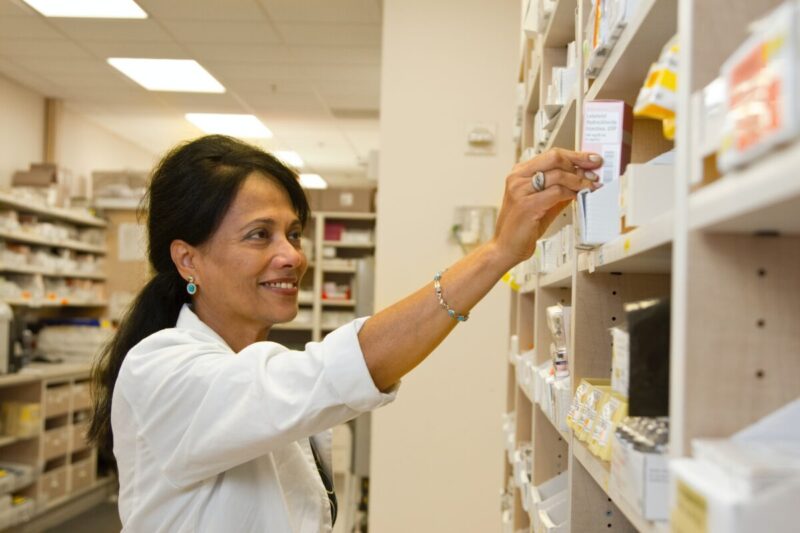When you go to the pharmacy, it can appear as if everything is already pre-packaged and ready to be dispensed immediately. But, when your pharmacist receives your prescription, you have to wait to pick it up. What happens behind the counter? And why do you have to wait to get your prescription? Below we outline the steps pharmacists take to ensure safety and accuracy when filling prescriptions.
1. Information Input
The pharmacist enters your prescription information into the pharmacy’s data system. If you deliver your prescription to the pharmacy, the pharmacist will input your information at the drop-off window and add your prescription to your profile for same-day pickup. If your doctor sends the prescription to the pharmacy, a pharmacist will enter your information into the system before beginning with the dispensing process and will call you when your prescription is ready.
2. Verification of Insurance Benefits and Copays
The pharmacist checks your insurance coverage to verify whether your insurance plan covers the medication your doctor prescribed. If your prescription is not covered under your insurance plan, you have a few options:
- Pay for the medication out-of-pocket
- Opt for a generic version of your prescription (a generic medication has the same active ingredients as brand-name medications and costs less)
- Ask your doctor for a different medication that is covered by your insurance plan
3. Prescription Review
The pharmacist checks the prescription against your medical history and your current medications (including vitamins and other non-prescription medications you’ve told your pharmacist about). It’s important to tell your pharmacist if you have any known allergies to medications.
Pharmacists make a thorough review of your prescription to make sure it is right for you, including if:
- Your new prescription will interact negatively with any current medications
- You’ve been prescribed more than one medication that serves the same purpose
- Your doctor prescribed you the appropriate dose
- You have any allergies to the prescription
- The prescription will exacerbate any current health problems (for example, non-steroidal anti-inflammatory drugs may make high blood pressure worse)
4. If Necessary, Coordination With the Prescribing Physician
If the pharmacist finds an interaction between your new prescription and one you’re currently taking, they will call your doctor. The pharmacist will try to solve the issue as quickly as possible to get your prescription prepared, but the time it takes to solve any issue with your prescription depends on how quickly your doctor responds.
5. Prescription Preparation
Your medication is filled and marked with your information. Some medications are filled using a dispensing machine that automates the process, while some medications are hand-counted.
6. Second Verification
After your prescription has been filled, a pharmacist double-checks that the correct medication, with the correct dosage, was dispensed. They also double-check that all of the treatment information is correct, such as the directions for taking the medications. Information about your medication is printed out and included with your prescription.
7. Prescription Pickup and Education
Completed orders are bagged and carefully organized in bins. When you pick up your medication, the pharmacist will ask for identifying information (like your name and birthday) to ensure that you receive the correct prescription.
At this time, the pharmacist will educate you about your medication as well as provide you with any necessary information you need to know to take your medication correctly (e.g. Should it be taken with food? Will you need to avoid the sun while taking this medication?).
At Summit Health Pharmacy, Our Pharmacists Have Your Best Interests in Mind
Pharmacists take many steps to ensure that patients receive medications that are safe. This process can take approximately 10 to 15 minutes if there are no issues with your prescription. Our pharmacists are dedicated to serving our patients and are always available for consultations and questions.
Source:
https://www.centennialcollege.ca/school-of-community-and-health-studies-blog/2016/march/08/behind-the-pharmacy-counter-why-it-takes-so-long-to-get-your-prescription-filled/ https://pans.ns.ca/public/pharmacy-services/filling-prescription-dispensing



